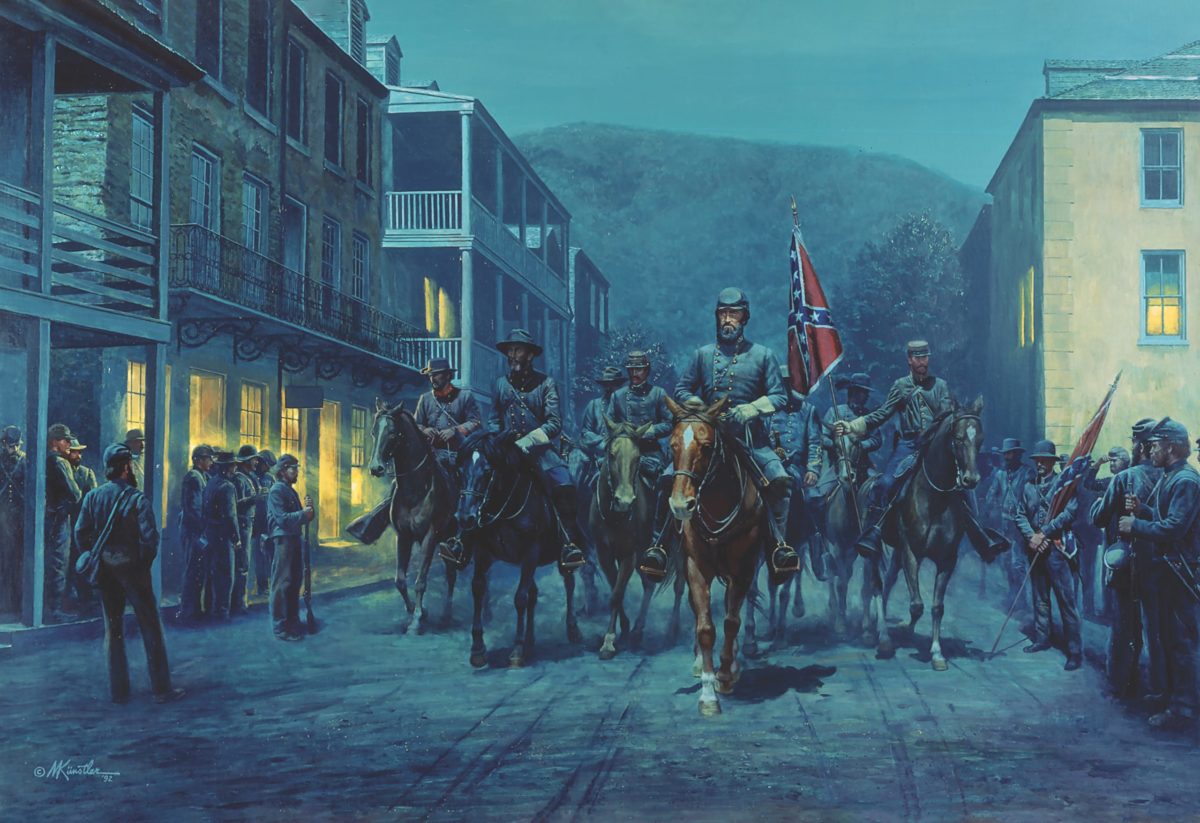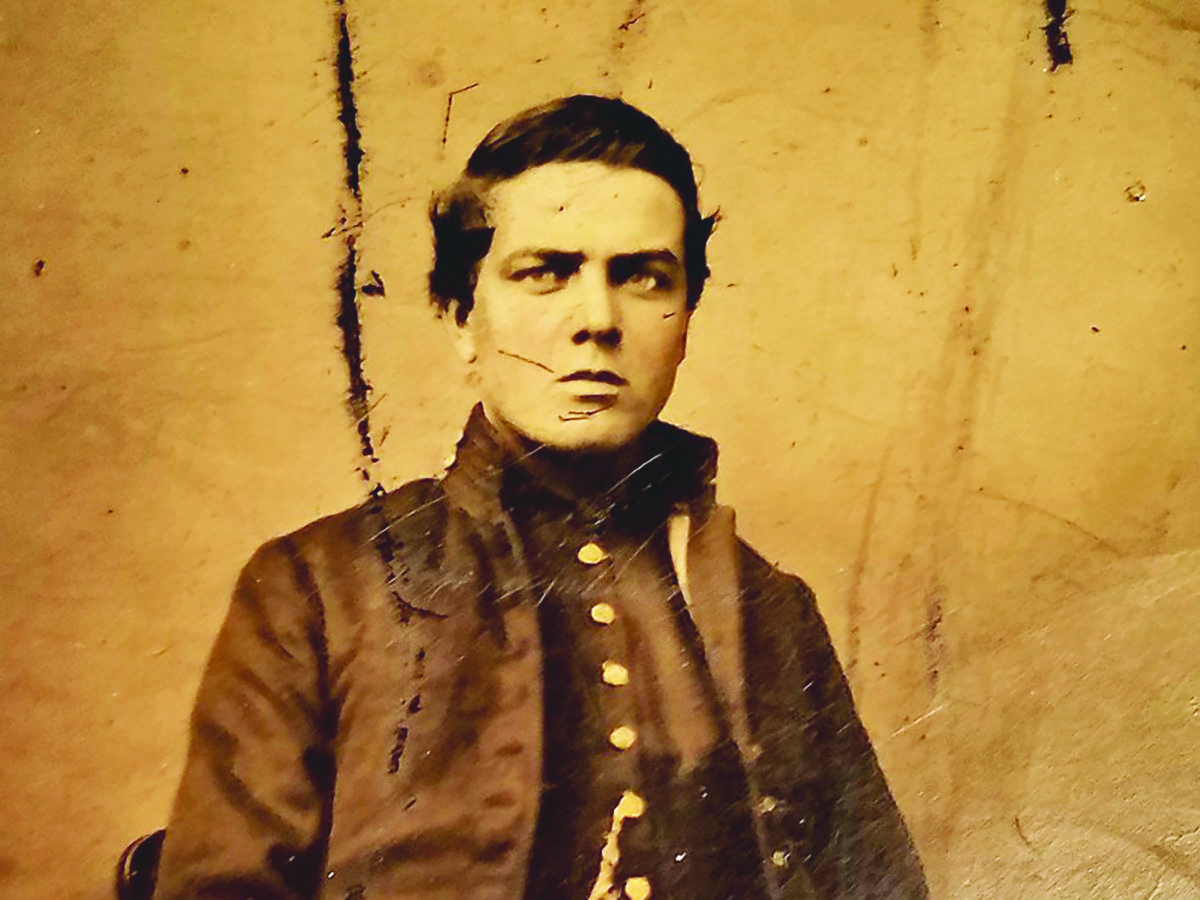The principal story of Maj. Gen. Thomas J. “Stonewall” Jackson’s victory at Harpers Ferry on September 15, 1862, is already well-known. Two days before the epic Battle of Sharpsburg, Md., Jackson succeeded in capturing the key twin-river Union bastion in nearby Virginia, forcing 12,500 Federal troops to surrender while losing barely 300 killed and wounded of his own. Typically overlooked is that, in the process, Jackson’s men also seized thousands of refugee slaves and freemen who were sheltering with Colonel Dixon Miles’ Harpers Ferry command.
Recommended for you
No official Confederate report on the Harpers Ferry operation made mention of these prisoners, which Northerners and Southerners alike called “contrabands” due to their legal status as property. Fortunately for posterity, The Richmond Dispatch covered their capture and transportation to the Confederate capital in some detail, mentioning the prisoners for the first time in an article that appeared on September 18, 1862. Stating “The whole garrison…surrendered on Sunday morning,” the Dispatch noted how “our forces captured about one thousand negroes.” Seven additional reports then appeared in the Dispatch and The Richmond Enquirer over the next five days outlining the story of what happened to these unfortunate human spoils of war after they fell into Rebel hands.
Following the Federal garrison’s surrender, Jackson assigned Maj. Gen. A.P. Hill to parole enemy soldiers and collect captured property for transportation to the rear. Hill commenced these tasks on September 15, and by September 16 thousands of Union prisoners began the long march from Harpers Ferry to Frederick, Md., and points beyond. At the same time, some of Hill’s men scoured the town for all the Blacks they could find, rounding them up for transfer south.
A witness to these events named Abba Goddard described them in her journal, writing, “Every nook, cranny, barn, and stye has been searched and men, women, and little children in droves have been carried off…our hospital laundresses, and our men servants, without a word of warning, were seized upon” and taken.
An unidentified Confederate major even tried to seize the Black men employed by Federal regiments, rather than let them go with the column of parolees heading to Frederick. This attempt to separate the Blacks led to a confrontation between the major and Colonel William H. Trimble of the 60th Ohio Infantry. Trimble had secured a pass for the Black non-combatants in his regiment, but when they tried to leave town the Confederate major attempted to separate them from the column anyway. Trimble pulled his sidearm in response and compelled the officer to step aside at gunpoint, saving the Black personnel in his command from being seized.
By September 20, according to The Richmond Dispatch, the number of contrabands Hill collected had ballooned to as many as 2,500—many of whom were marched to Winchester, Va., along with the guns, ammunition, and other materiel captured at Harpers Ferry. Additional details of the operation began to appear in the Dispatch by September 22, which reported that “a large number of contrabands…had taken refuge with the Yankee thieves…[including] negroes [who] belonged to citizens of Jefferson and adjoining counties. A letter before us states that one gentleman from Clarke [County], who had lost 31 negroes, found 28 of them in this lot.”
Subsequent reports on September 23 and 24 also noted that the contrabands were captured “slaves” and “negroes, whom the Yankees had stolen.”
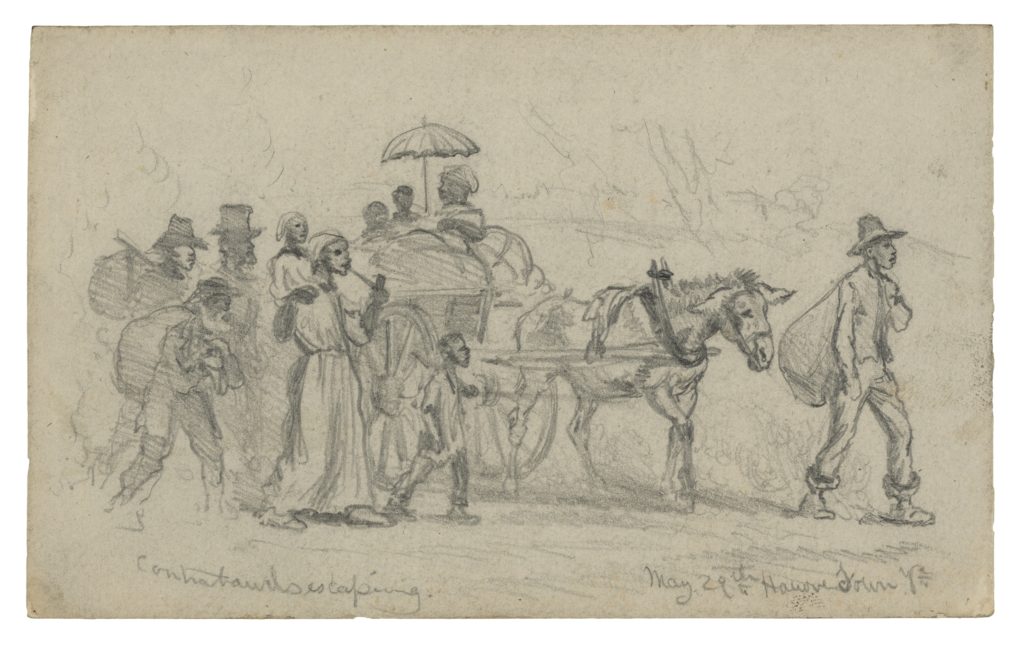
According to one report that appeared in Southern newspapers, some of these individuals returned to their masters. “I met to-day hundreds of negroes taken at Harper’s Ferry going home with their owners,” the report’s author wrote from Winchester under the pseudonym ACCOMAC. “Most of them seemed in fine spirits, singing ‘Carry me back to Old Virginia,’ &c.” Major Andrew Wardlaw of the 14th South Carolina had a similar personal experience while enjoying the hospitality of the local Bell family, who “were delighted to see the Southern Army [and] had fifteen negroes at Harpers Ferry.” No fewer than “1200 negroes were captured & restored to their owners,” confided Wardlaw to his diary, including the helpful “Mrs. Bell [who] got 10 of hers.”
Still other contrabands ended up being confiscated by the Confederate army rather than returned to their owners. According to The Richmond Dispatch on September 24, this occurred because their “masters propose to offer them for sale in Richmond, not deeming them desirable servants after having associated with the Yankees.” Finally, on that same day, the Dispatch noted how “[t]wo car loads of negroes arrived in this city yesterday by the Central Railroad.” The men responsible for completing this task belonged to the brigade of Colonel Edward L. Thomas, according to A.P. Hill’s Maryland Campaign report. Noting that he “remained at Harper’s Ferry until the morning of the 17th…at 6.30 a.m., I received an order from General Lee to move to Sharpsburg. Leaving Thomas, with his brigade, to complete the removal of the captured property, my division was put in motion at 7.30 a.m.”
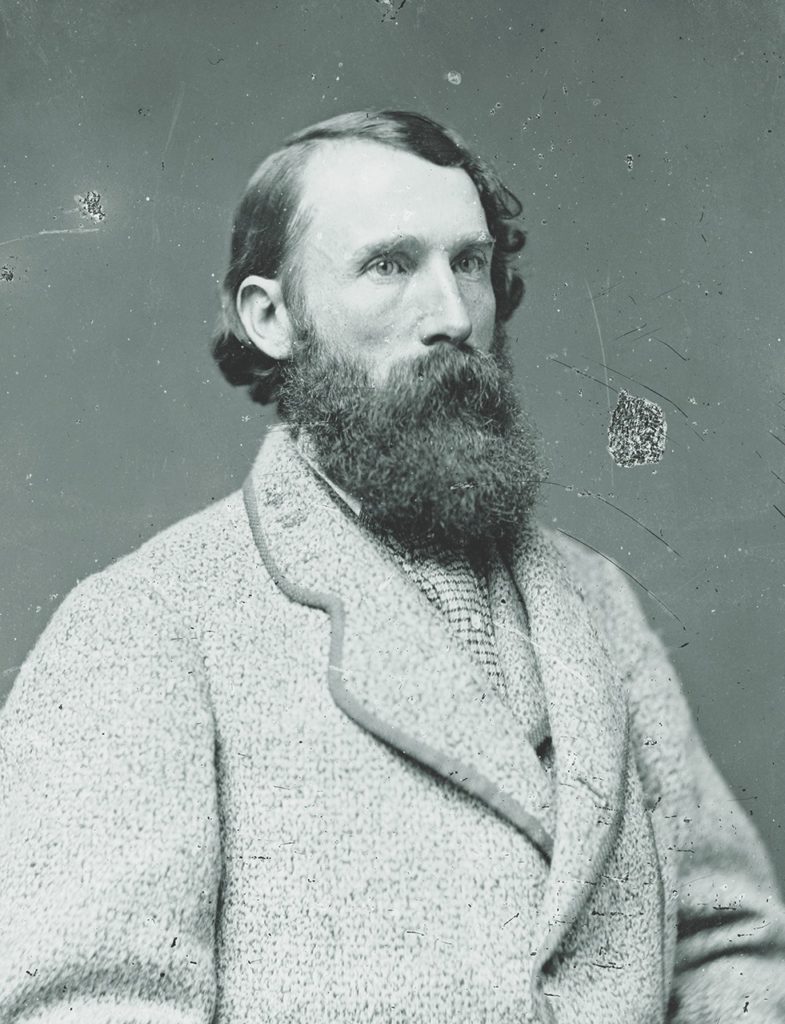
A wealthy planter before the war, Thomas commanded four regiments of troops from Georgia, including the 14th, 35th, 45th, and 49th Infantry, so it was likely these men who oversaw the transfer of the contrabands from Harpers Ferry to Richmond.
There is evidence that others in the Army of Northern Virginia knew about these events at Harpers Ferry. For instance, a letter written by Colonel Francis H. Smith of the 9th Virginia to Virginia Governor John Letcher on September 16 also appeared in the Dispatch on September 20. Writing that the Federal garrison at Harpers Ferry had surrendered unconditionally, including “10,000 men, with all the arms, fifty pieces of artillery, ammunition, 100 wagons, quartermaster and commissary stores, and many cars, some of which were loaded,” Smith counted “600 negroes” among those seized.
Smith’s regiment belonged to Brig. Gen. Lewis Armistead’s Brigade in Maj. Gen. Richard H. Anderson’s Division of Longstreet’s command. As such, the 9th Virginia passed through Harpers Ferry on the way to Sharpsburg. It did not participate in the processing and removal of prisoners and materiel after the Federal garrison’s surrender. Thus, Smith either saw for himself, or received word from others, that a significant number of Blacks had been captured.
A commissary sergeant with the 13th Georgia, part of Brig. Gen. Alexander Lawton’s Brigade in Jackson’s command, also wrote home about the event, informing his fiancée that after Jackson had compelled the Federals “to surrender on the 15th September….We took 11,700 prisoners & small arms, 76 cannons, 3000 ‘contrabands’ and many stores of all kinds.”
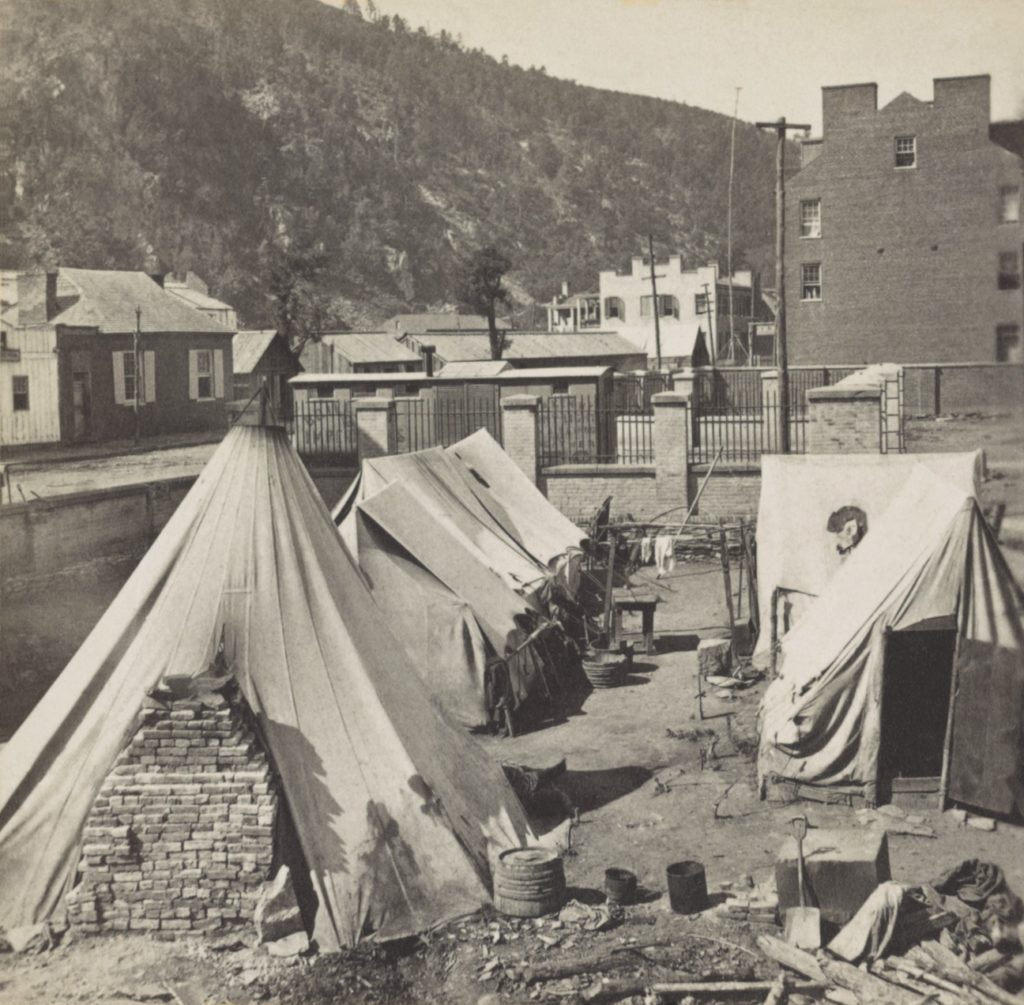
Word also traveled through the civilian populace, as noted by Joseph Addison Waddell, a former newspaper editor and wartime clerk in the army quartermaster’s office in Staunton, Va. Recording in his diary that “Maj[.] Yost has just arrived from Harper’s Ferry,” Waddell confirmed “that…Gen. Jackson…had captured at Harper’s Ferry 11,000 prisoners and 1500 negroes, 50 pieces of artillery, all their ammunition, commissary and Quartermaster’s stores.”
Similarly, a brief mention of “1000 negroes” captured at Harpers Ferry made it into the local newspaper of Camden, S.C., in late September 1862, proving that some in the South far from the front heard about the event. The matter-of-fact language used in the article indicates, however, that it raised no special interest.
This remarkable incident demonstrates how at the same time they were fighting a war for Southern independence, General Robert E. Lee’s men also enforced standing state property laws concerning captured contrabands. The removal and sale of the Harpers Ferry captives would prove to be a foreshadowing of events to come when, during the Gettysburg Campaign, Maj. Gen. Richard Ewell’s Second Corps seized and shipped south Black men, women, and children in Pennsylvania with little regard for their legal status.
Alex Rossino writes from Boonsboro, Md. He is the author of Their Maryland: The Army of Northern Virginia From the Potomac Crossing to Sharpsburg in September 1862 (Savas Beatie, 2021), from which this article is adapted.

